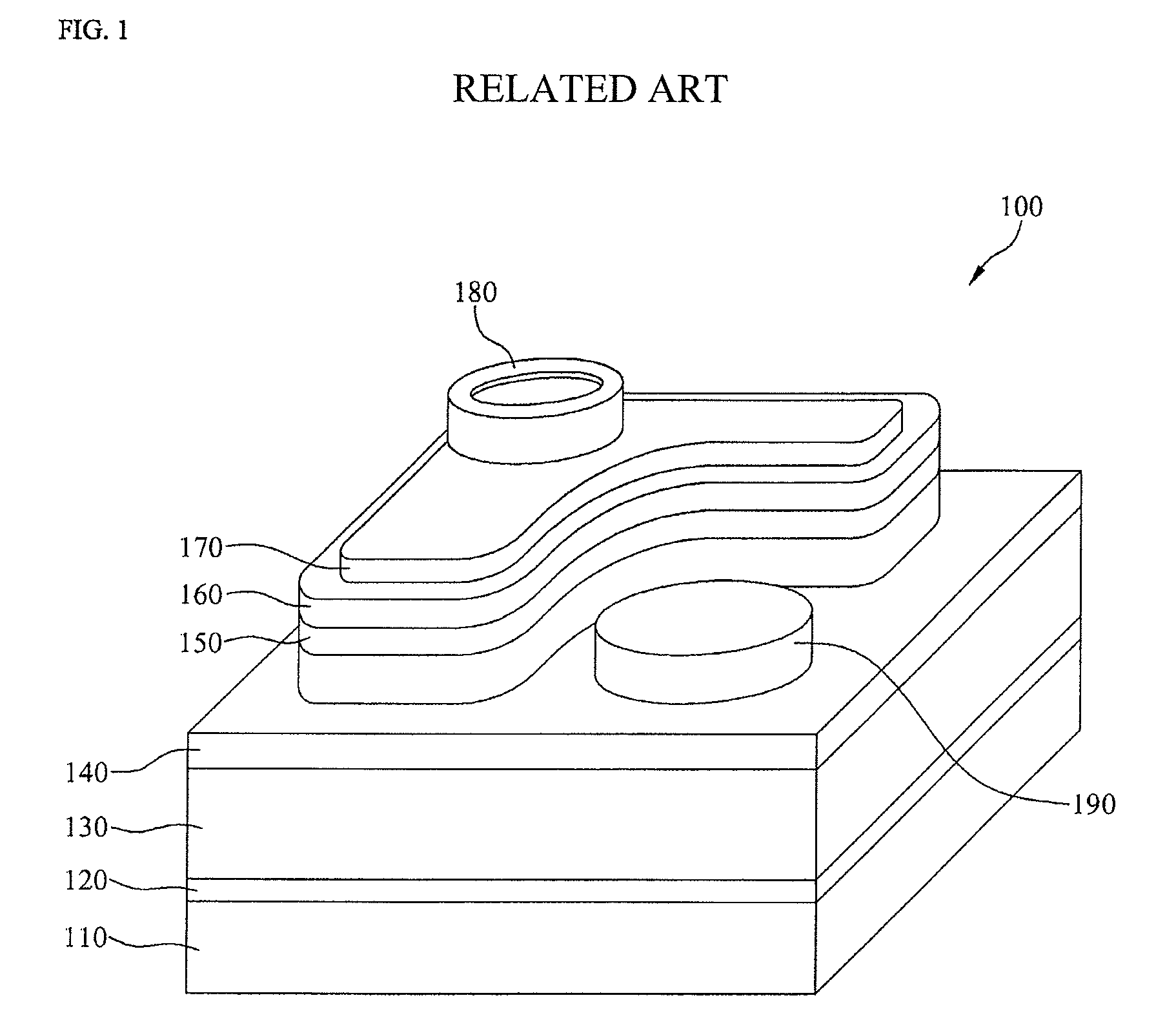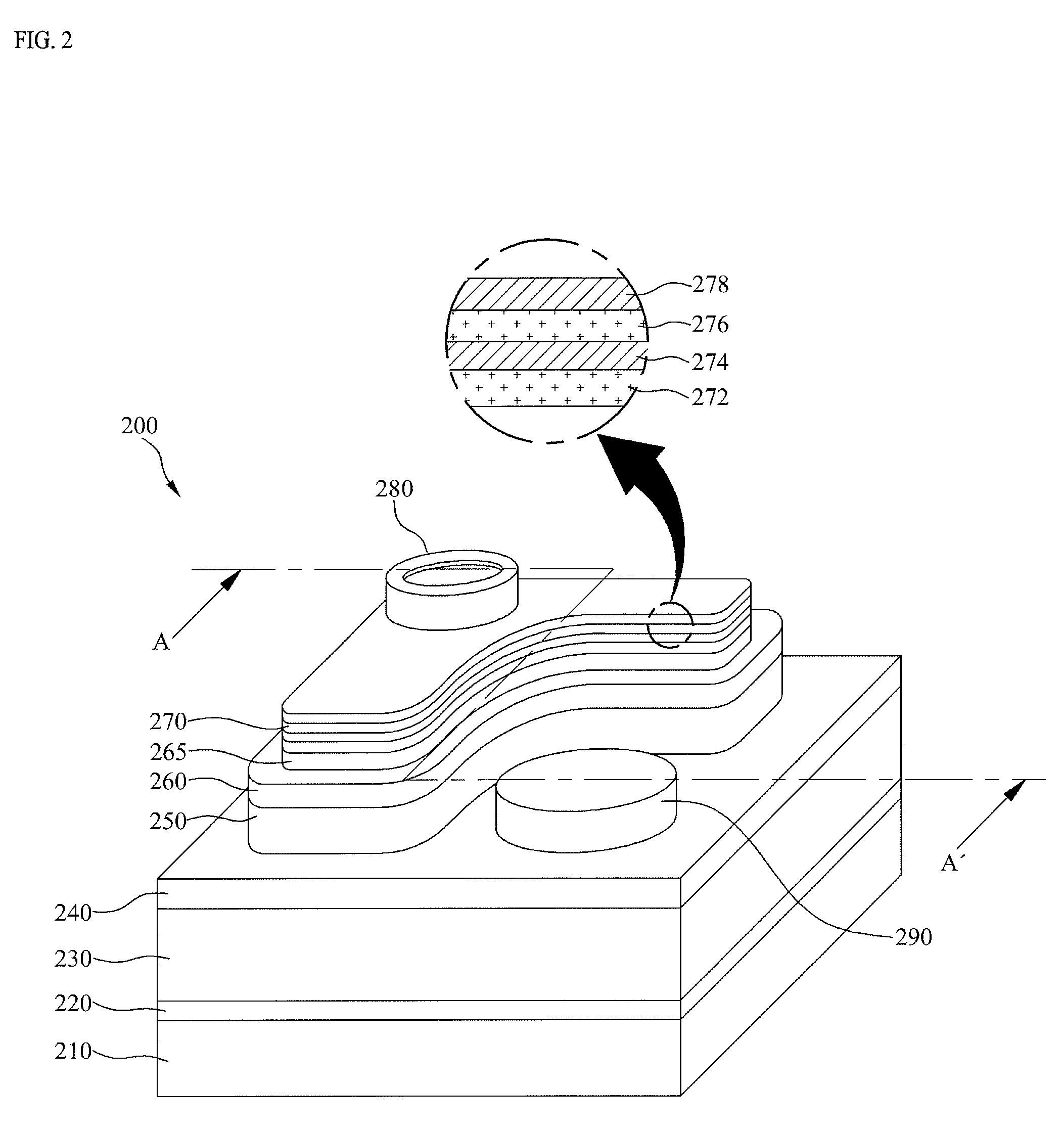Semiconductor light emitting device and method for manufacturing the same
a technology of semiconductor, which is applied in the direction of semiconductor/solid-state device manufacturing, semiconductor devices, and electrical equipment, etc., can solve the problems of deterioration of light efficiency in the semiconductor light emitting device package, loss of light, and indium content, so as to reduce contact resistance and improve current injection efficiency
- Summary
- Abstract
- Description
- Claims
- Application Information
AI Technical Summary
Benefits of technology
Problems solved by technology
Method used
Image
Examples
first embodiment
[0069]At this time, a contact portion 300 as shown in FIG. 7, may be formed by partially etching the first conductive thin film 272, the first insulating thin film 274, the second conductive thin film 276, and the second insulating thin film 278 until the second semiconductor layer 260 is exposed.
[0070]According to this embodiment, the P type electrode 280 may be formed on a region that covers one or more contact portions 300 on the light transmissive electrode layer 270 as well as the inside of the one or more contact portions 300.
[0071]As a result, the P type electrode 280 is in contact with sidewalls 302 and 304 of the first and second conductive thin films 272 and 276 constituting the light transmissive electrode layer 270, whereby contact resistance and current injection efficiency may be improved, and current crowding may be prevented from occurring. In this way, electric characteristics of the semiconductor light emitting device 200 may be improved.
second embodiment
[0072]A contact portion 310 as shown in FIG. 8, may be formed by partially etching the first insulating thin film 274, the second conductive thin film 276, and the second insulating thin film 278 until the first conductive thin film 272 is exposed.
[0073]According to this embodiment, the P type electrode 280 may be formed on a region that covers one or more contact portions 310 on the light transmissive electrode layer 270 as well as the inside of the one or more contact portions 310.
[0074]As a result, since the P type electrode 280 is in contact with a surface 314 of the first conductive thin film 272 as well as a sidewall 312 of the second conductive thin film 276 constituting the light transmissive electrode layer 270, the contact region may be more extended than that of the first embodiment, whereby current crowding may be more reduced.
[0075]Hereinafter, a method for manufacturing a semiconductor light emitting device according to the present invention will be described with ref...
PUM
 Login to View More
Login to View More Abstract
Description
Claims
Application Information
 Login to View More
Login to View More - R&D
- Intellectual Property
- Life Sciences
- Materials
- Tech Scout
- Unparalleled Data Quality
- Higher Quality Content
- 60% Fewer Hallucinations
Browse by: Latest US Patents, China's latest patents, Technical Efficacy Thesaurus, Application Domain, Technology Topic, Popular Technical Reports.
© 2025 PatSnap. All rights reserved.Legal|Privacy policy|Modern Slavery Act Transparency Statement|Sitemap|About US| Contact US: help@patsnap.com



